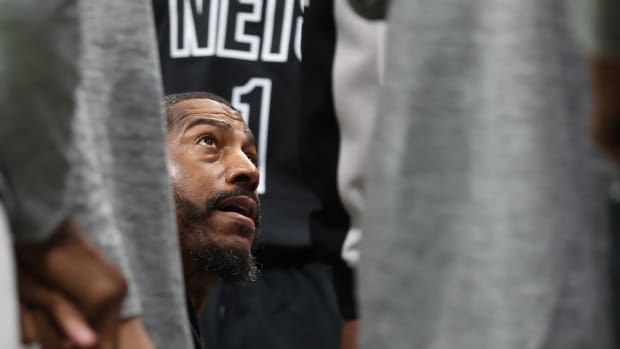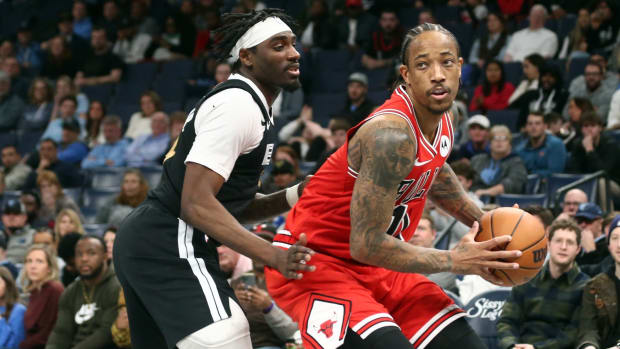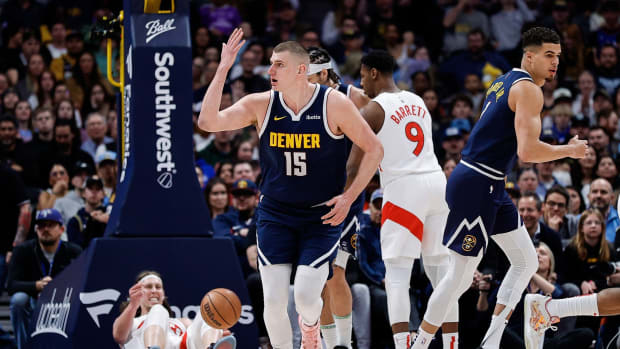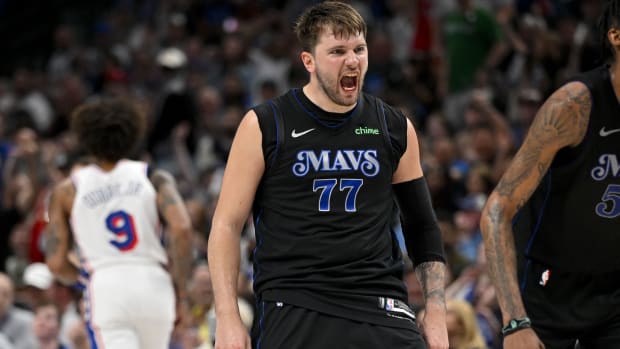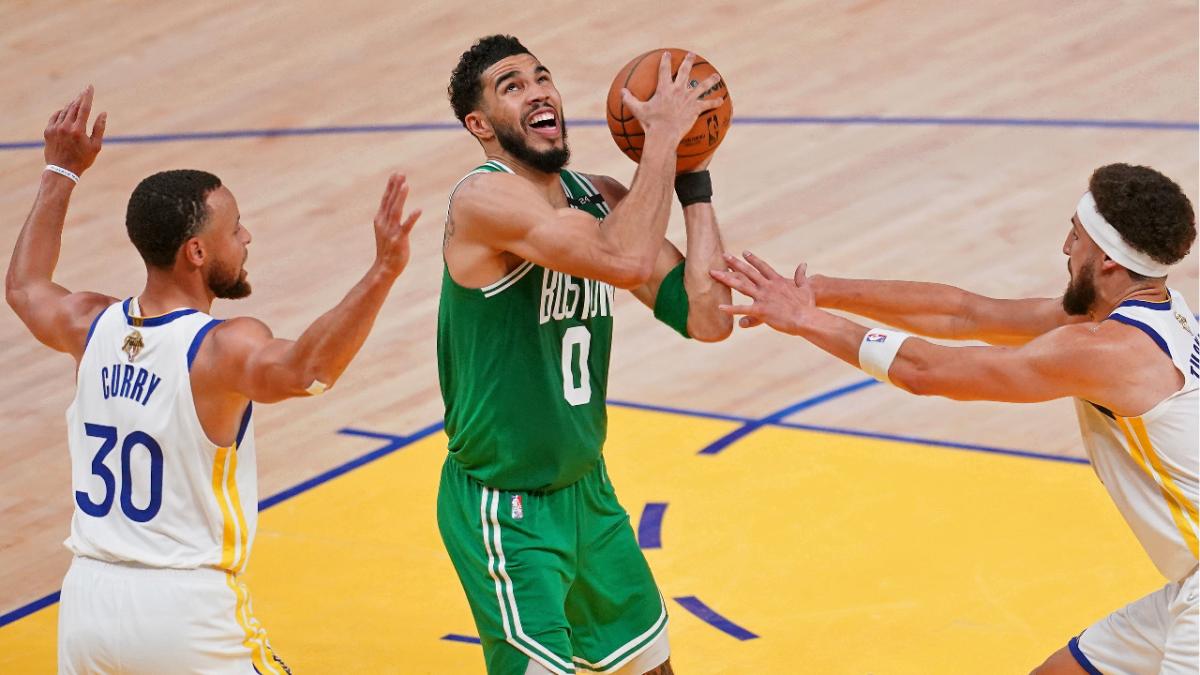
Warriors Made These Key Adjustments. How Will the Celtics Respond?
A handful of brief thoughts on Golden State’s solid Game 2 adjustments, many of which figure to send Udoka back to the drawing board:
- The Warriors changed their defensive coverage to prioritize Boston’s perimeter shooters by anchoring onto them more than in Game 1, while also showing more of a willingness to live with whatever Tatum was able to get for himself offensively.
Perhaps most notably: Horford—shadowed by Thompson and a handful of other Warriors throughout the contest—didn’t get a single look from deep in Game 2 after hitting a career-best six triples in the Finals opener. It marked the first outing all postseason in which Horford failed to take a three.
Beyond that, Smart and Payton Pritchard each shot 0-for-3 from outside, while Derrick White connected on just 4-for-13 overall on the night. The performance by the role players marked an enormous reversal and left the Celtics’ offense relatively anemic inside the arc, where Boston shot just 34.8% (15-for-43). Through two games, no team in NBA Finals history has made fewer two-point shots than the Celtics’ 37—a point that, barring a shift in approach, raises the stakes even more on the team’s accuracy from distance.
- Playing further up on just about everyone not named Tatum meant less room to breathe for those players, and it resulted in turnover, after turnover, after turnover for Boston.
All told, there were 18 Celtics giveaways—including more in the third period (five), than Boston had buckets (four)—which the Warriors capitalized on to the tune of 33 points, the second-highest total in NBA Finals history. The game was essentially won (or depending on how you view it, lost) right there, in that one data point. Especially considering the teams were identical in terms of three-point efficiency, each shooting 15-for-37.
- After taking 12 shots in Game 1—many of them awkward-looking, in an apparent win for the Boston defense—Green took just three in Game 2. Yet, as promised, he played with a determination to impact the game elsewhere with his physicality and heavily charged emotions, and he repeatedly created gaps for Curry, who picked his spots and ultimately picked the Celtics apart with high screen-and-rolls in the third.
Yes, Green occasionally looked like a downfield lineman at times. But it helped pick the Warriors’ offense out of the mud, and helped put the game away, illustrating what Golden State initially intended to do after its dominant third quarter in Game 1. He also did a solid job defensively on Brown, who sizzled to begin the contest, but then cooled off completely over the final three quarters.
- Plugging in Gary Payton II, who sat out Game 1, made a considerable difference, not only because he gives the Warriors another solid defensive player (though the much taller Tatum hit a couple of shots over him), but also because of the juice he gives Golden State in transition and as a talented passer into tight, congested windows.
Payton largely vacuumed up the minutes left behind by Andre Iguodala, who returned to the lineup for Game 1 but missed Game 2. Yet Payton’s presence provides Kerr the luxury of not having to stick with Thompson through some brutal offensive stretches. (Another detail: lineups with Payton, Stephen Curry and Otto Porter Jr. outscored Boston by 16 points Sunday in just under 13 minutes of work.)
Thompson played a team-high 39 minutes, but that was only because Kerr left him in late, after pulling the other starters, seemingly hoping that the sharpshooter—who shot just 4-for-19—might find a rhythm before Game 3. Like occasional moments during the regular season, Klay took a couple of shots that looked completely outside the framework of anything Golden State was doing, almost trying to force himself into a flow at times.
More NBA Coverage:






























